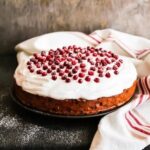Are you looking to elevate your cake decorating game? Learn how to use a piping bag to decorate cakes and create stunning designs that will impress your friends and family. Using a piping bag can have a significant impact on the overall presentation of a cake, allowing you to create intricate details and beautiful patterns that are sure to wow anyone who sees your creation.
Choosing the right piping bag is essential for achieving professional-looking results. With different types of piping bags available in the market, it’s important to understand which one would be best suited for different types of cake decorating. Whether you’re frosting cupcakes or creating elaborate designs on a multi-tiered wedding cake, the type of piping bag you choose can make all the difference in achieving the desired effect.
In addition to choosing the right piping bag, preparing the icing or frosting is crucial for successful cake decorating. From achieving the right consistency for piping to filling the bag without making a mess, there are several important steps to consider before getting started with decorating. Mastering these fundamentals will set the stage for creating beautiful designs on your cakes with ease and confidence.
Choosing the Right Piping Bag
When it comes to cake decorating, choosing the right piping bag is essential for achieving the desired results. There are several types of piping bags available in the market, each with its own unique features and advantages. Understanding the different types of piping bags and their suitability for various cake decorating techniques can help enhance the overall presentation of a cake.
Types of Piping Bags
The two main types of piping bags are disposable and reusable. Disposable piping bags are made from lightweight plastic or parchment paper and are convenient for one-time use. They are also ideal for working with different colors of icing/frosting without the need for cleaning in between. On the other hand, reusable piping bags are typically made from canvas, nylon, or silicone and can be washed and used multiple times.
Suitability for Different Cake Decorating Techniques
For detailed and intricate designs that require precision and control, such as creating delicate flowers or writing messages on cakes, a reusable piping bag with a firm and sturdy material like silicone is recommended. This type of bag provides better grip and stability, allowing for more accurate movements while decorating. For simpler and less precise designs, such as basic borders or swirls, disposable piping bags may suffice due to their convenience and affordability.
When choosing a piping bag, it’s also important to consider the size that would best suit your specific cake decorating needs. Smaller piping bags are perfect for fine details and smaller amounts of icing/frosting, while larger ones are suitable for covering larger areas or handling larger quantities.
Understanding the different types of piping bags available in the market and their suitability for different cake decorating techniques is crucial in achieving professional-looking results. By selecting the right type of piping bag based on your specific needs, you can elevate the overall presentation of your cakes and create impressive designs with ease.
Preparing the Icing/Frosting
Preparing the icing or frosting is a crucial step in using a piping bag to decorate cakes. The right consistency of the icing/frosting can make all the difference in achieving beautifully piped designs and patterns on a cake. To start, it’s important to choose the right type of icing/frosting for the desired outcome.
For intricate designs and details, royal icing is often used because it dries hard and holds its shape well. On the other hand, buttercream frosting allows for smoother lines and has a creamier texture.
Once the type of icing/frosting is chosen, it’s essential to achieve the right consistency for piping. If the icing/frosting is too stiff, it will be difficult to pipe and may result in uneven or broken lines.
Conversely, if it’s too thin, the design may not hold its shape and could spread out on the cake. To achieve the perfect consistency, adding small amounts of liquid (such as milk or water) to thin out stiff icing/frosting or gradually adding confectioners’ sugar to thicken runny icing/frosting can help achieve the desired result.
In addition, adding food coloring to create different shades can enhance the overall presentation of the cake. It’s important to note that gel food coloring is preferable as it does not affect the consistency of the icing/frosting as much as liquid food coloring does. Once prepared, filling and using a piping bag properly can help bring your cake decorating skills to a whole new level.
| Common Issues | Troubleshooting Tips |
|---|---|
| Clogging | Use a larger piping tip for chunkier icings or frostings to prevent clogging. |
| Inconsistent Piping | Practice maintaining even pressure while piping by using parchment paper before decorating cakes. |
Filling the Piping Bag
Once the piping bag is selected, the next step is to prepare the icing or frosting. It is crucial to achieve the right consistency for piping, as icing that is too thin will not hold its shape, while icing that is too thick can be difficult to pipe. Adding a small amount of liquid at a time and mixing well until reaching the desired consistency is recommended.
When it comes to filling the piping bag with the prepared icing or frosting, it is important to do so without making a mess. One effective method for filling a piping bag is to fold down the top of the bag around your hand like a cuff, then use a spatula or spoon to add the icing/frosting into the bag.
It is crucial not to overfill the bag as this can cause spillage and make it difficult to manage when decorating.
| Types of Piping Bags | Description |
|---|---|
| Disposable plastic bags | Convenient for single-use and easy cleanup. |
| Reusable fabric or silicone bags | Eco-friendly option with durability for frequent use. |
As mentioned in this section about filling the piping bag, understanding how to fill it properly provides a foundation for successful cake decorating. The next step after filling up your piping bag with frosting is mastering how to handle and use it effectively on a cake surface.
Holding and Using the Piping Bag
Proper Technique for Holding the Piping Bag
When it comes to using a piping bag to decorate cakes, the right technique for holding the bag is crucial. To start, fold down the top of the piping bag to form a cuff and fill it with your prepared icing or frosting.
Then, twist the top of the bag to close it and push the icing down towards the tip to remove any air bubbles. Hold the piping bag with one hand at the top where you twisted it closed, while using your other hand to guide and control the pressure on the piping bag.
Creating Different Designs and Patterns
Once you have mastered holding the piping bag properly, you can begin creating different designs and patterns on your cake. For simple lines or borders, hold the piping bag at a 90-degree angle to your cake and apply even pressure as you guide the icing onto the cake surface. To create more elaborate designs such as flowers or rosettes, you will need to practice varying pressure and movements to achieve desired shapes.
Practice Makes Perfect
Using a piping bag may seem intimidating at first, but with practice, anyone can master this skill. Start by practicing basic lines and shapes on parchment paper before moving on to decorating an actual cake. Experiment with different tips and techniques until you find what works best for you. Take your time and don’t get discouraged if your first attempts are not perfect – great cake decorators were once beginners too.
By mastering how to hold and use a piping bag properly, you can elevate your cake decorating skills and create beautifully decorated cakes that are sure to impress. With patience and practice, anyone can become adept at using a piping bag to turn plain cakes into stunning works of art.
Different Piping Tips and Their Effects
When it comes to cake decorating, the piping tips used with a piping bag can make a world of difference in the final presentation of the cake. There are various types of piping tips available in the market, each creating a unique effect that can elevate the design of the cake. Here are some common types of piping tips and the effects they can create:
- Round Tips: These are great for creating simple lines, dots, or writing on cakes. They can also be used to fill in areas with frosting.
- Star Tips: Star tips come in different sizes and are perfect for creating beautiful borders, stars, swirls, and rosettes on cakes and cupcakes.
- Petal Tips: As the name suggests, these tips are ideal for creating flower petals and ruffles on cakes. With practice, you can create delicate flowers that add a touch of elegance to your cake design.
Using different piping tips requires varying levels of pressure and technique, so it’s essential to practice using them with different consistencies of icing or frosting.
When using a piping bag to decorate cakes with different tips, it’s important to hold the bag at the right angle and apply consistent pressure to achieve uniform designs. Trying out different combinations of piping tips and experimenting with various techniques will help you understand how each tip works and how they can be used together to create intricate designs on your cakes.
Practice Exercises
When it comes to decorating cakes with a piping bag, practice makes perfect. To help master the art of piping and gain confidence in using the piping bag, here are some beginner-friendly practice exercises to try:
- Straight Lines: Start by practicing straight lines on a piece of parchment paper or a cake dummy. Hold the piping bag at a 90-degree angle to the surface and apply even pressure as you pipe to create consistent lines.
- Dots and Swirls: Experiment with creating different sized dots and swirls by varying the pressure and speed at which you pipe. This will help you get comfortable with controlling the flow of icing/frosting from the bag.
- Writing and Lettering: Practice writing words or creating lettering using cursive or print fonts. This will help improve your control and precision when piping letters onto a cake.
Remember, it’s okay if your first few attempts don’t turn out perfectly – piping takes practice. The key is to keep trying and experimenting with different techniques until you find what works best for you.
Once you feel comfortable with these basic exercises, you can also try more advanced techniques such as creating rosettes, borders, and intricate flower designs. With patience and perseverance, you’ll soon become adept at using a piping bag to decorate cakes like a pro.
Troubleshooting
In conclusion, mastering the art of using a piping bag to decorate cakes can truly take your baking skills to the next level. The impact it can have on the overall presentation of a cake is undeniable, and with the right techniques and tips, anyone can achieve professional-looking results.
From choosing the right piping bag to understanding the proper consistency of icing/frosting, and from filling and holding the piping bag correctly to using different piping tips for various designs, each step is crucial in creating beautiful and intricate cake decorations.
As with any skill, practice makes perfect when it comes to using a piping bag. Starting with some beginner-friendly practice exercises can help build confidence and improve technique. Whether it’s simple lines or intricate flowers and borders, mastering the use of a piping bag opens up endless possibilities for creativity in cake decorating.
And while mastering how to use a piping bag to decorate cakes may seem daunting at first, it’s important not to get discouraged by common issues that may arise such as clogging or inconsistent piping. By addressing these challenges head-on and following troubleshooting tips, anyone can overcome these obstacles and continue honing their skills in cake decoration.
With dedication and patience, using a piping bag will soon become second nature, allowing you to create stunning edible works of art for any occasion.
Frequently Asked Questions
What Is the Easiest Way to Put Frosting in a Piping Bag?
The easiest way to put frosting in a piping bag is to use a tall glass or container to hold the bag open while you scoop the frosting into it. This helps prevent making a mess and ensures the bag gets filled evenly.
How Do You Decorate a Cake With Piping Bag and Tips?
To decorate a cake with a piping bag and tips, start by securing the parchment paper or cake decorating turntable. Hold the piping bag at a 90-degree angle to the cake and apply steady pressure to create your desired design.
How Do You Put a Nozzle in a Piping Bag?
Putting a nozzle in a piping bag is simple – just snip off the end of the piping bag, then gently push the nozzle through the opening until it protrudes from the other side. Make sure it fits snugly in place before adding your frosting.

Welcome to my blog about home and family. This blog is a place where I will share my thoughts, ideas, and experiences related to these important topics. I am a stay-at-home mom with two young children. I hope you enjoy reading it! and may find some helpful tips and ideas that will make your home and family life even better!





